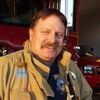Recently I have been called out in the dead of the night for truly life-threatening scenarios such as a Charlie horse. I’m serious. A middle-aged man was having a Charlie horse in his leg.
We arrived to find him sitting on the bedroom floor clad in his jammies and rubbing his leg. He told us of a horrible pain in his leg but admitted it has subsided prior to our arrival.
Once, I raced to an address to render aid to a man who had a sore thumb from playing video games all night. But I made one the other day that really made me stop and wonder how sinister and deep-rooted this 911 abuse problem is.
On this call, a concerned husband met us and led us past two cars in the driveway and through the house to a bedroom. An older lady was sitting on the corner of a bed, well dressed including shoes and socks.
As the story unfolded it seems she went to her doctor the day before with pain in a joint. She didn’t see the doctor, but a physician’s assistant gave her some exercises to do with the offending joint.
After she returned home she dutifully did her exercises, and lo and behold when she awoke this morning the joint was sore and stiff.
It was at this point in the story she stopped and looked at us, signifying the climax of the story and the part where we were to take action. An awkward silence descended upon the room as the three of us armed with a jump bag, oxygen kit and AED stood before her.
Finally one of my coconspirators was able to ask her what exactly she wanted us to do? She fired back angrily that obviously she needed to go to the hospital.
I met the ambulance crew at the door whom had just arrived and pointed them to the bedroom.
The Dr. will see you now
You know when I was a kid (albeit back in the rotary dial phone era) my mom never called an ambulance when I got a sore throat or fever. She called the family doctor and we went that day.
The nurse always asked if I had a fever or was throwing up, if I was we used the sick entrance and waited in a private waiting room. Those days are long gone.
Now, the family doctor we use can sometimes see us the same day, but it is usually a couple of days away. If you need a specialist that can be up to two months.
Naturally, the hospital emergency department is a three-hour wait on a good day, which of course has led to the “If I go by ambulance I will be seen faster” mindset — that is another subject all together.
This problem has led to the booming industry of the “doc in the box,” the storefront minor emergency clinic. They are more common in my part of the country than convenience stores.
I go to one when I am sick. I come in, pay, wait a few minutes and see the health professional. I use the term health professional because I’m not sure the guy is a doctor. He wears scrubs and has a stethoscope around his neck, so he looks the part.
He looks at my throat and murmurs “hmmm” like doctors do. A couple of prescriptions, a shot, copay and I’m on my way. I don’t need an ambulance for this.
You may need an ambulance if …
But I digress, getting back to the subject matter. How do we educate the 911 misguided?
I don’t know. I thought about an “if this happens, then do that” flow chart. You know, you answer questions and move to the next box. Is the person breathing? If you answer yes, move to the next box.
Do you have a car and are you less than 5 minutes from the hospital? If you answer yes, move to the next box that says you do not need an ambulance.
I don’t think anybody in this business minds helping those who really need help — and if they do they probably need to do something else.
Of course this can go to the other extreme, the people who don’t call 911. The other day we sped to a national banking chain for an unconscious person. We arrived and made entry with the stretcher and lifesaving equipment.
As we entered, a woman in the rear behind the counter waved and pointed to a side door. We headed that way until we were intercepted by a man in a suit, obviously the branch manager, who demanded to know why we were there.
We explained that a person had suddenly taken a trip to dreamland and to please get out of the way. He followed us into a back room where we found our person in distress lying on the floor. She was semi-conscious and starting to wake up.
As the medics began their assessment, I heard the suit ask the waving woman employee if she had followed protocol. She asked him to explain, which he did.
He berated her, explaining that bank employees just can’t call 911, they have to notify Jim in loss prevention at the corporate office first. They then began scrambling to find Jim’s number.
I, of course, just had to chuckle. Note to self, if I have the big one in a bank I really hope Jimbo is not away from his desk at counting the paper water cooler cups and that he religiously checks his voicemail.
Let me hear from you.













